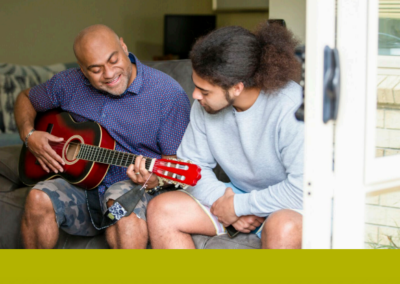Case Study_Monte Cecilia_FINAL

“Until now, we’ve never actually never been able to verify that the green buildings we construct can actually do what we say they do.” – Rochelle Payne
Leading New Zealand green buildings expert Rochelle Payne (Ade) has taken an equity share in healthy homes technology start-up Tether because she is excited by the technology’s ability to completely transform how green buildings are constructed.
Payne, an accredited professional in LEED, BREEAM, Green Star NZ and Homestar, as well as being a Passive House Consultant, says Tether has the potential to completely transform how homes are built because it goes beyond design to measure in real-time what happens when humans occupy a space.
The Tether EnviroQ is a battery (or mains) powered indoor environmental quality monitoring system for housing, schools and work environments that is designed to ensure quality living, learning and working conditions all year round.
With a battery life of three years on six AA batteries, the Tether EnviroQ measures indoor temperature, humidity, CO2, lighting levels, ambient noise levels, air pressure and dew point – 24 hours a day, 7 days a week, 365 days a year (and reports to a central online dashboard and mobile app).
The end of theory based design?
Payne says that at the moment all green design and healthy home principles are based on the theory of design.
“Until now, there was no way to measure how the theory of design actually performs – we could always measure the potential, but not the actual.”
Payne, who is a green buildings consultant and who made national headlines in 2017 for her 10 Homestar Design rating for the rammed earth house she is building with her husband Joel, says people cannot be divorced from the environment.
“To date the only way we have been able to evaluate green buildings and healthy homes was by design and construction based evaluation, but that doesn’t look at the operation – we have never actually been able to verify that the green buildings we construct do what we say they can do.
“Tether measures the actual environmental quality of living, learning and working spaces, and that’s just the beginning. Finally we can focus on how people impact a building – how they are occupying them.”
Payne says she is particularly excited by the potential of the data that Tether gathers to change how buildings can be built to be truly healthy.
Two kinds of home in NZ, neither are healthy
Payne says there are essentially two types of homes in New Zealand.
“Old building stock which was built to old building codes, so they have issues with moisture, mould and drafts that lead to illnesses like asthma – the home is letting things in you don’t want – because they create unhealthy nesting environments.
“And then we have new buildings built to the current building code, which have insulation and double glazing, but they are air tight and ventilation is often inadequate. Modern design favours very big windows which cause over-heating and the only extractors we have are in the kitchen and bathroom – the result is poor indoor environment quality .”
Payne says that New Zealand is still not designing houses very well and even modern homes have the potential for mould and damp – due to facilities like open showers that cause a lot of steam.
“Tether can help us accurately figure out what’s working and what isn’t because it actively monitors the indoor environment 24/7 and reports on the day-to-day impact of people living in a home.”
For more information visit: https://www.tetherme.io/
ABOUT TETHER
Self-funded upwards of a quarter of a million dollars so far by majority shareholder and CEO, Brandon van Blerk, Tether is a tech start-up company that offers a turnkey, full-stack solution which includes sensor installation and software integration dedicated towards the enablement of healthy homes and spaces.
The other shareholders are software developers Jordan Clist (chief technology officer) and Andrew Smith (lead developer).
The idea for Tether started in July 2017. By October 2017 the company had its first prototype and signed its first contract with Tamaki Regeneration in February 2018, before being rolled out to Housing New Zealand properties in June 2018.
Based in Auckland, Tether has three permanent employees and six contractors (three electronics engineers, a mobile developer, a UI and UX designer and a software developer).
Community Housing Aotearoa - Newsletter 3 June 2025
Community Housing Aotearoa_Media Release_Unlocking affordability key to ending homelessness_2025
Westpac NZ And Community Housing Aotearoa Announce New Partnership